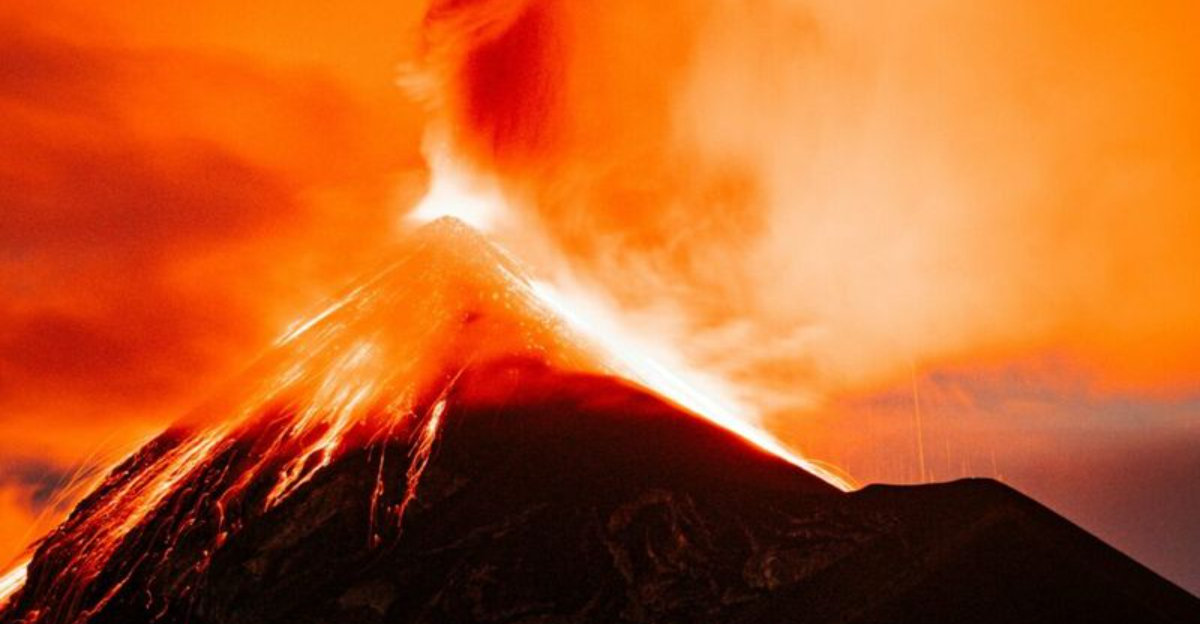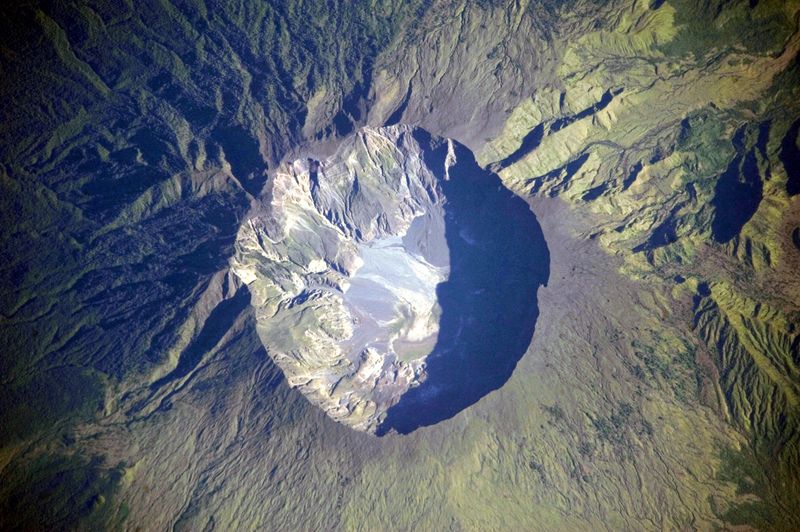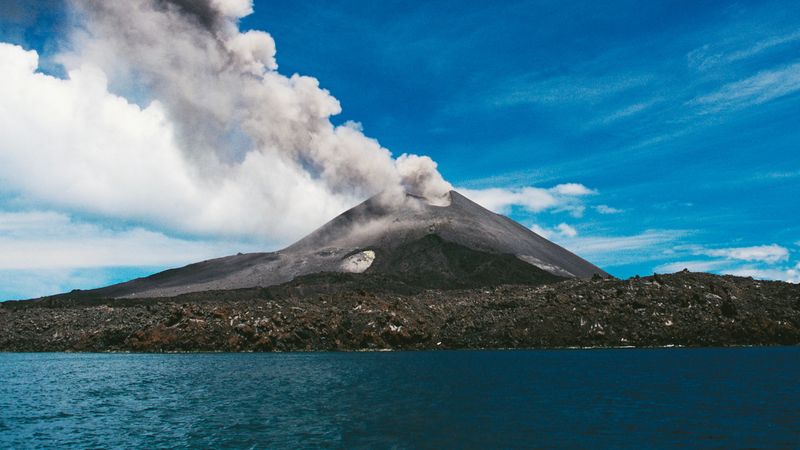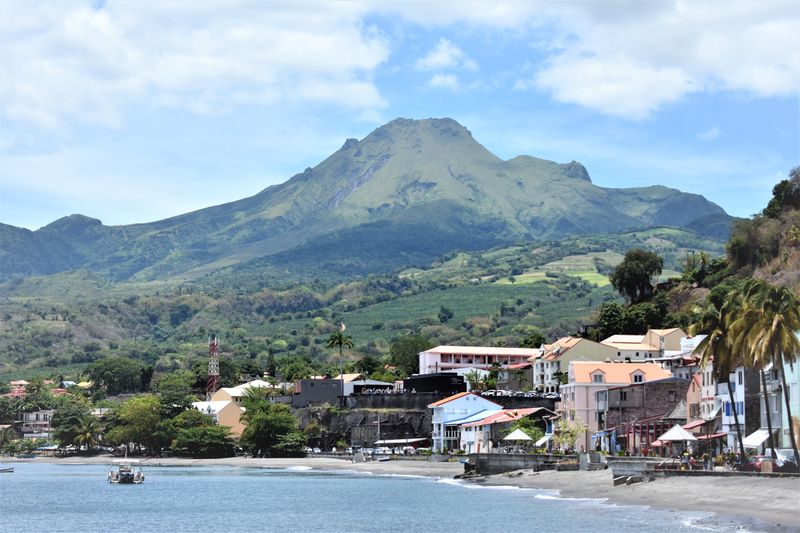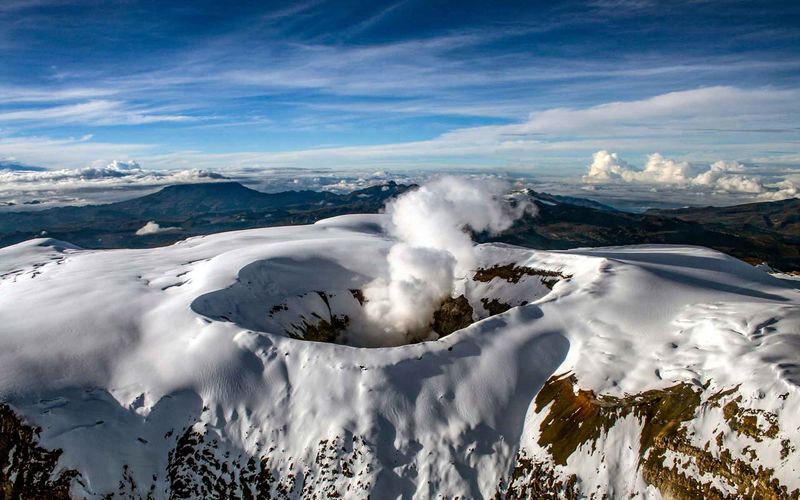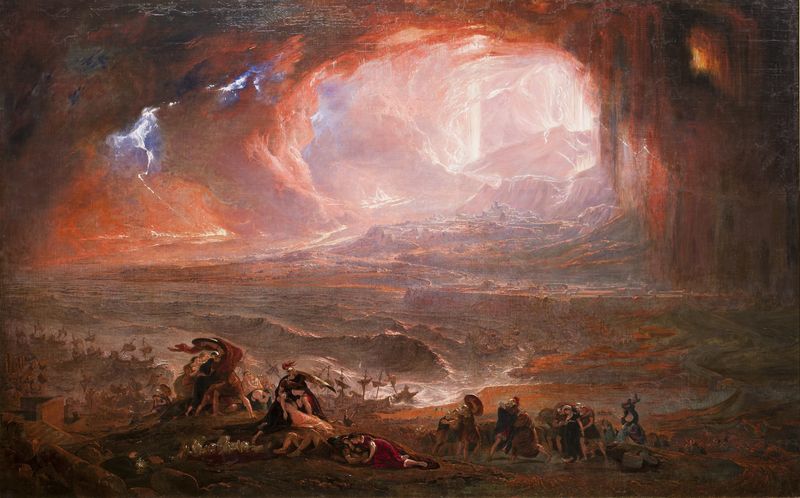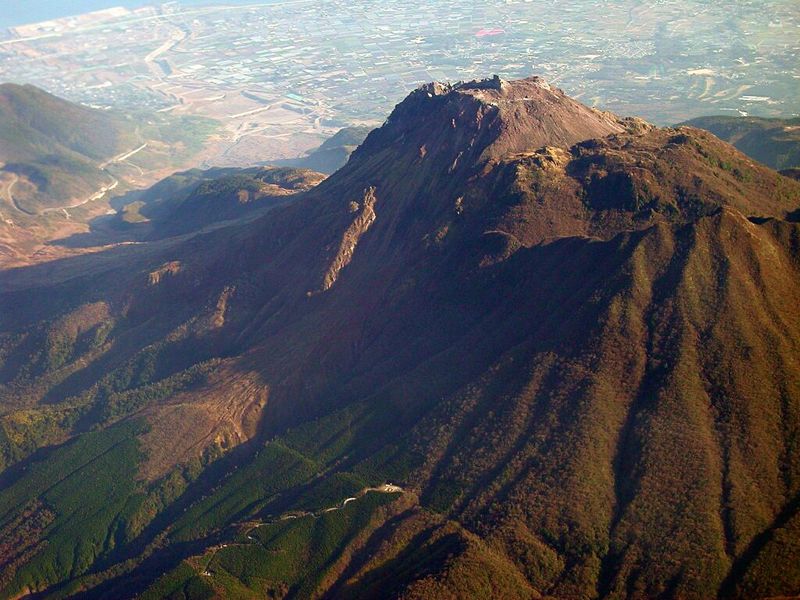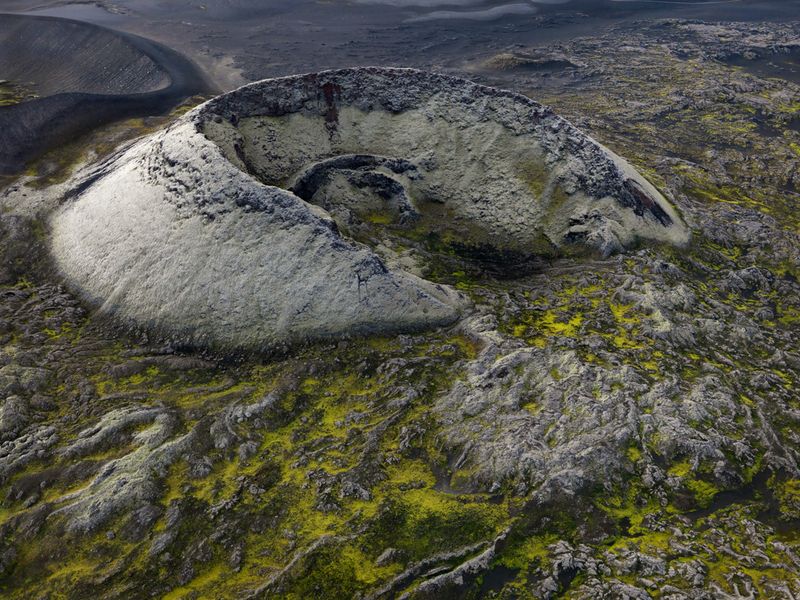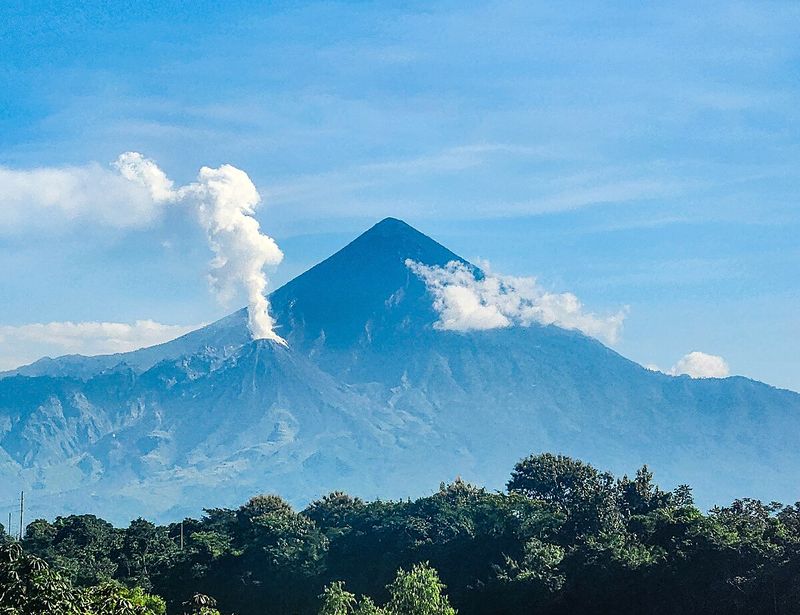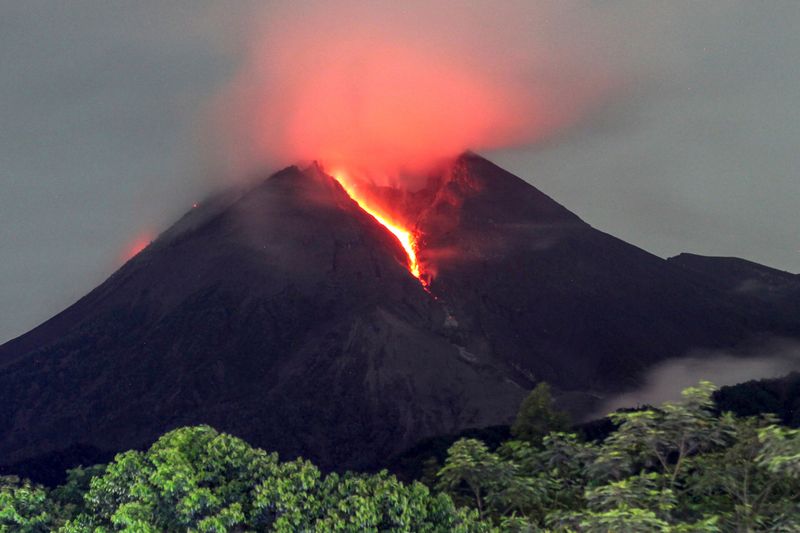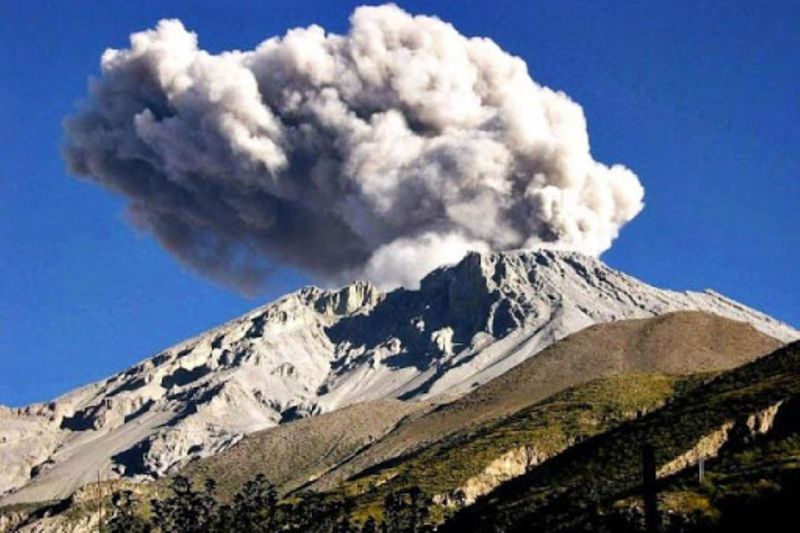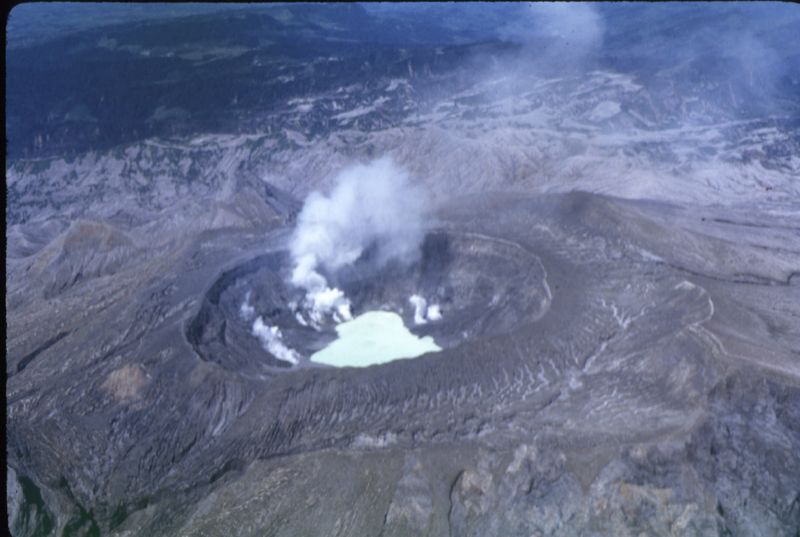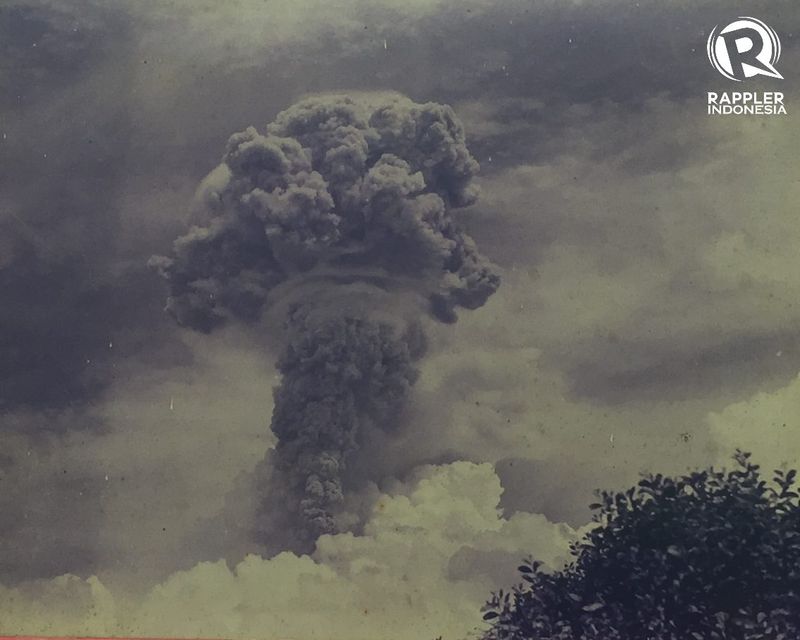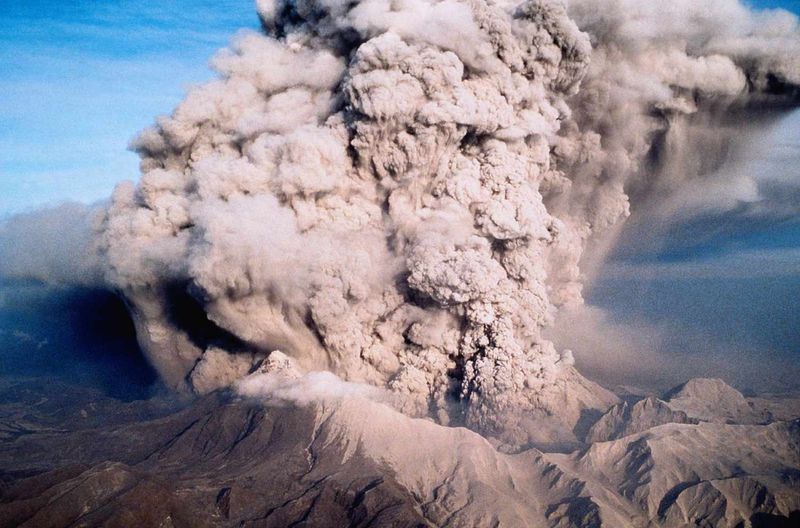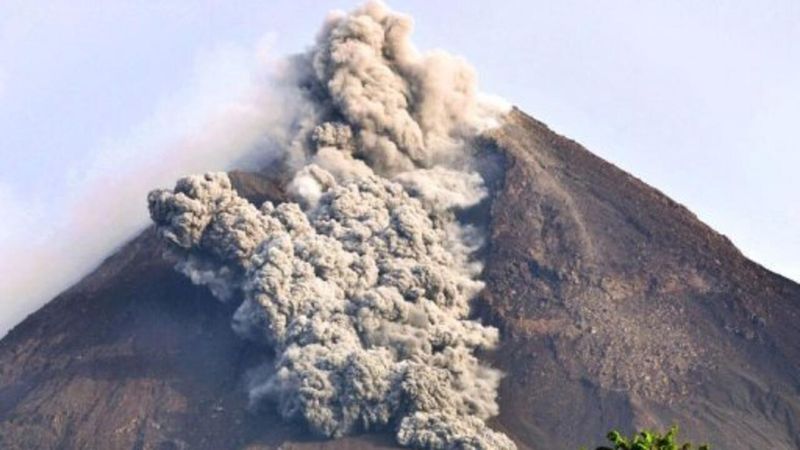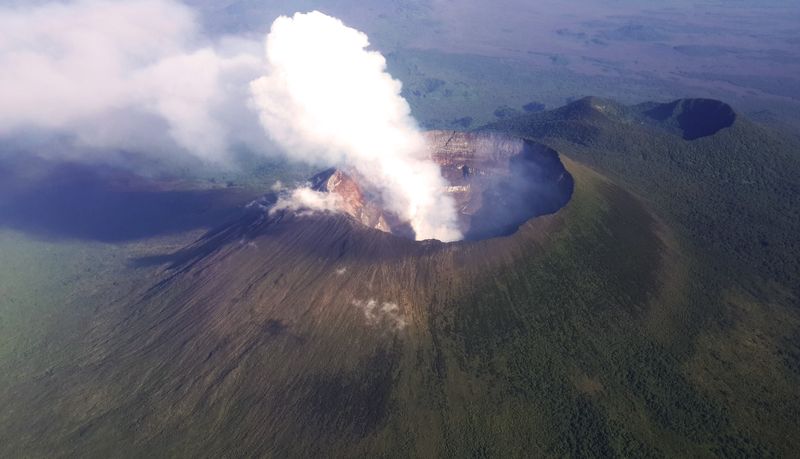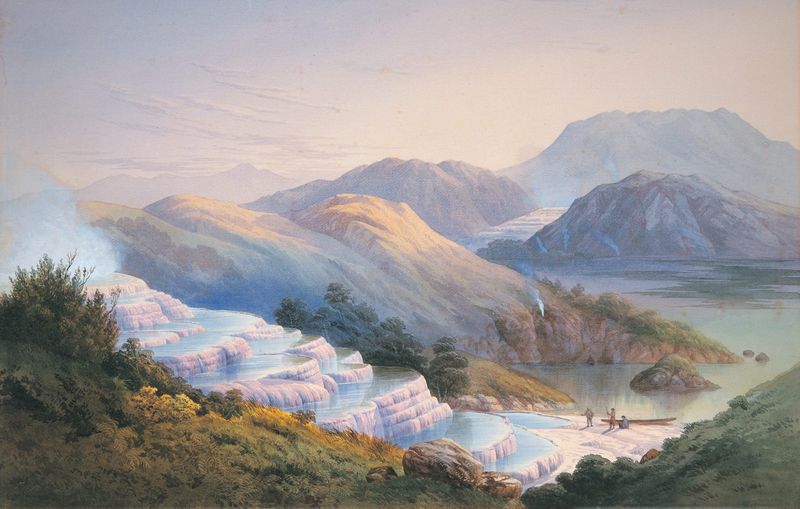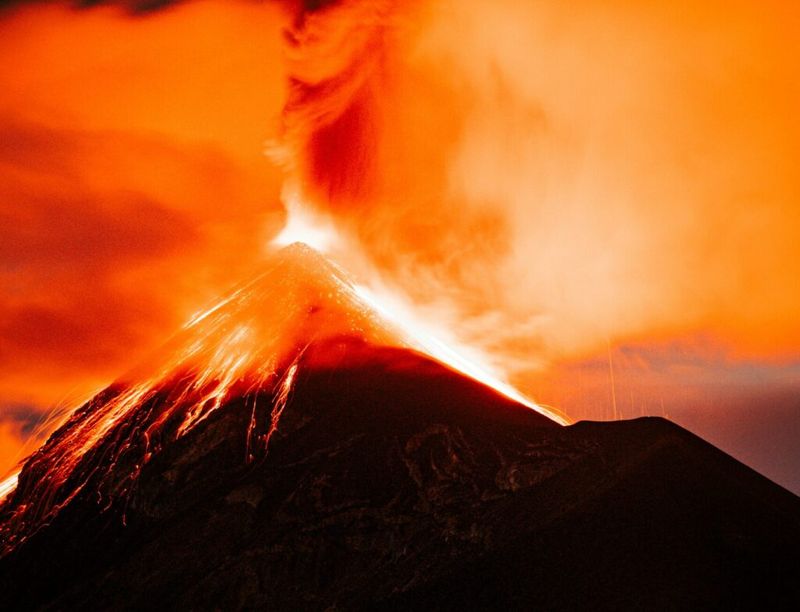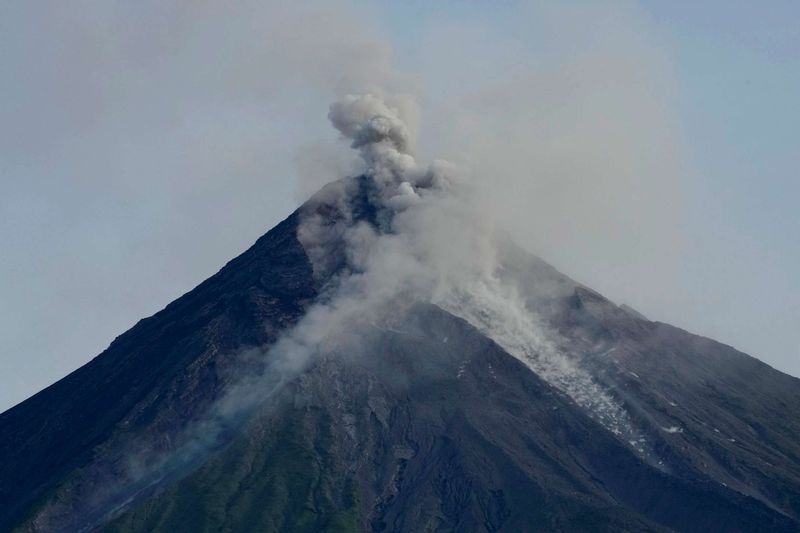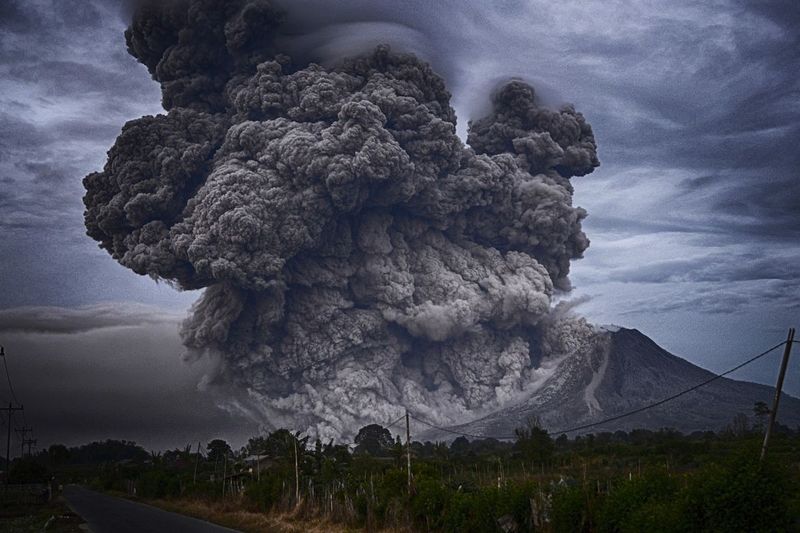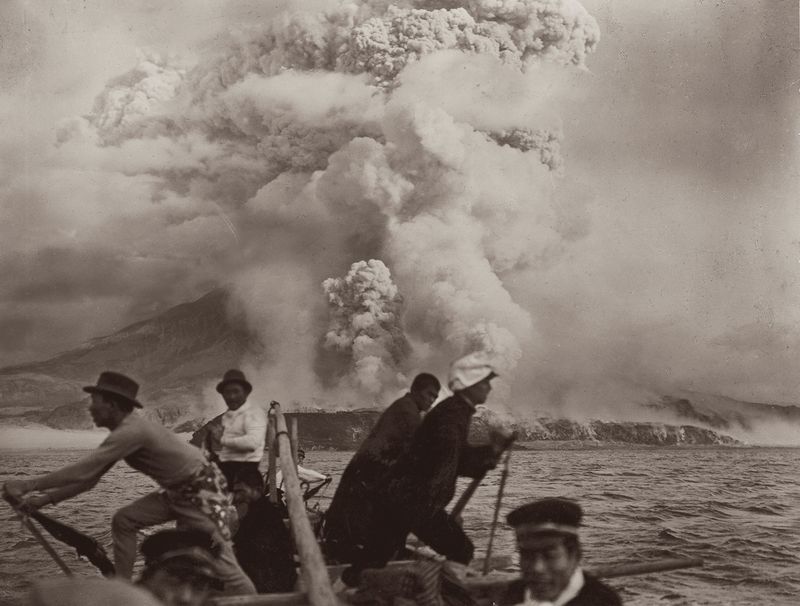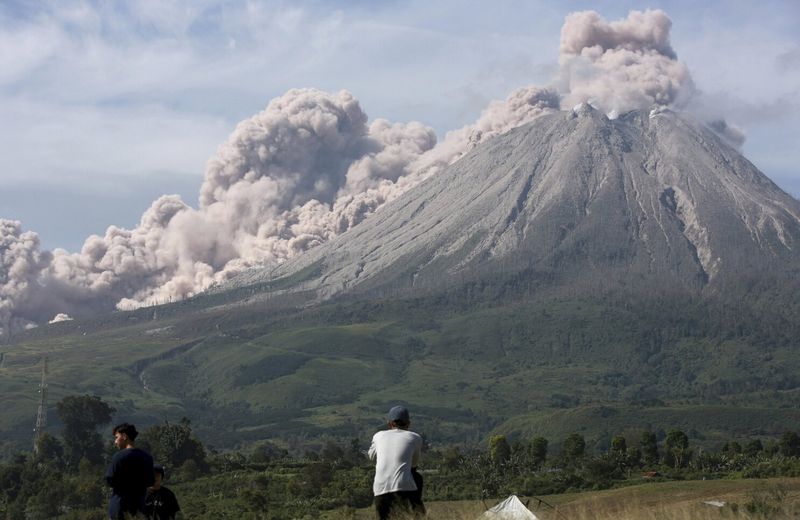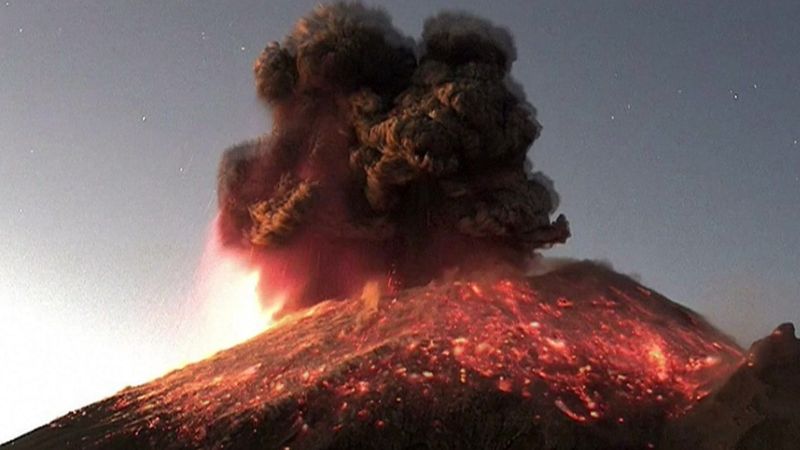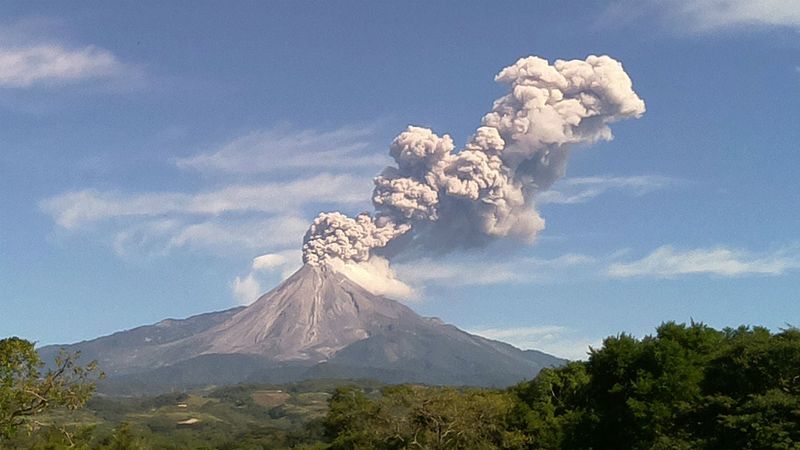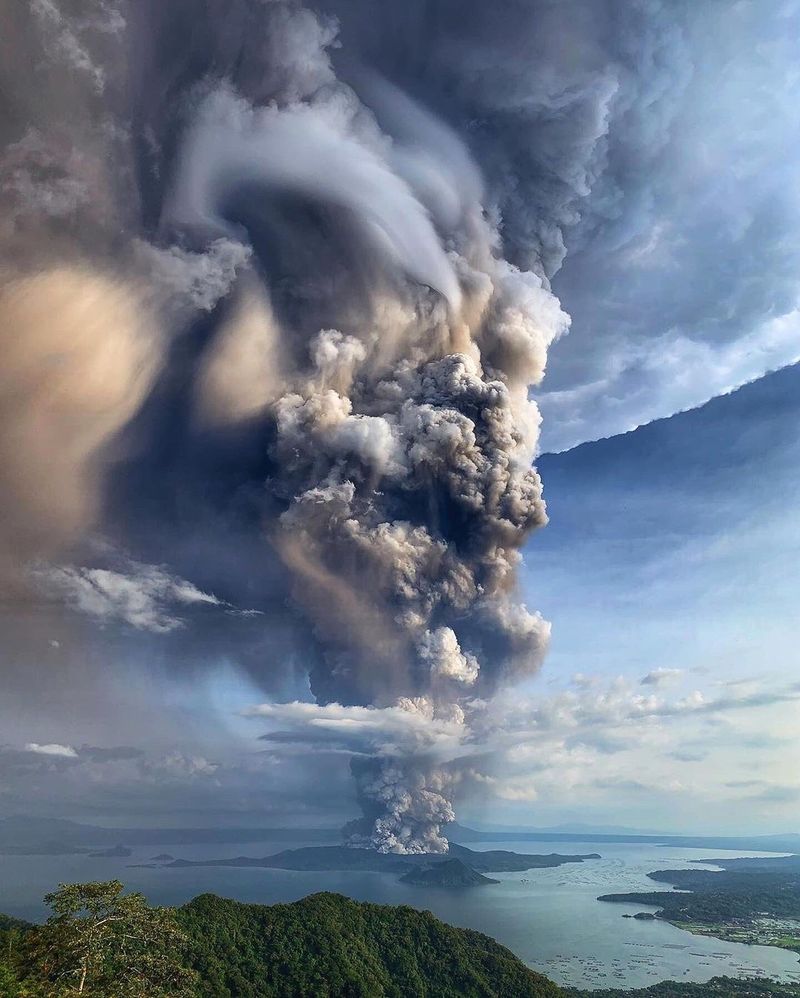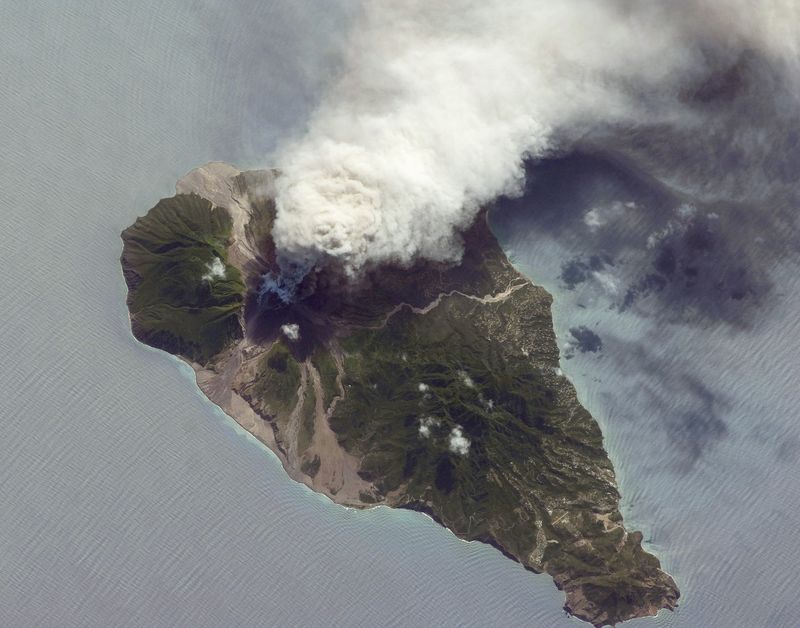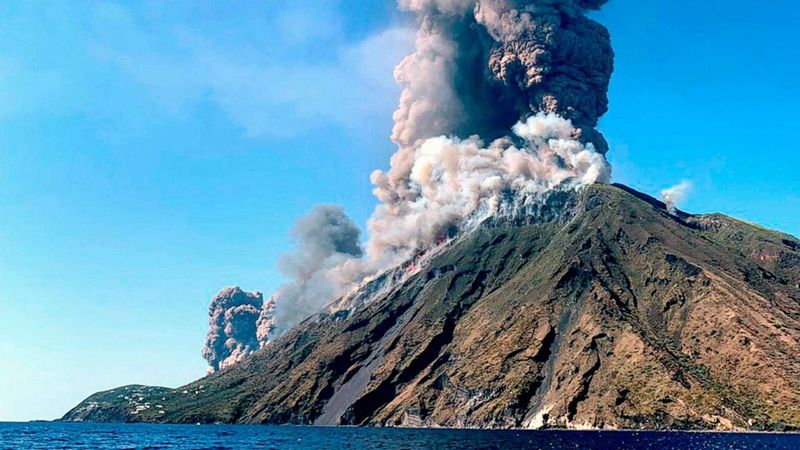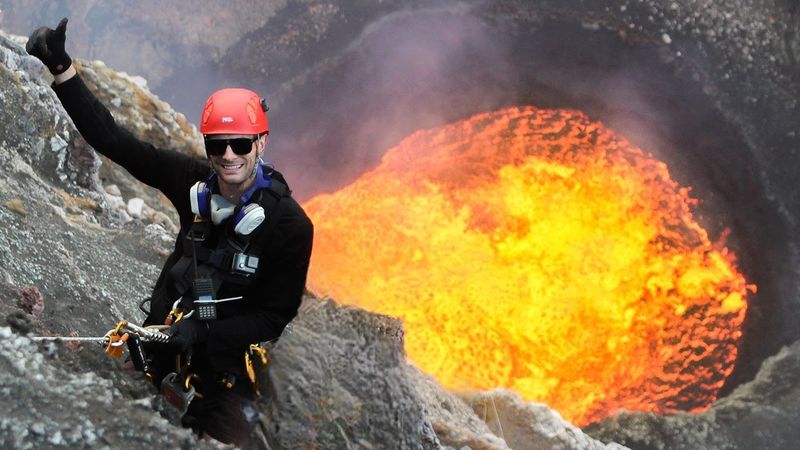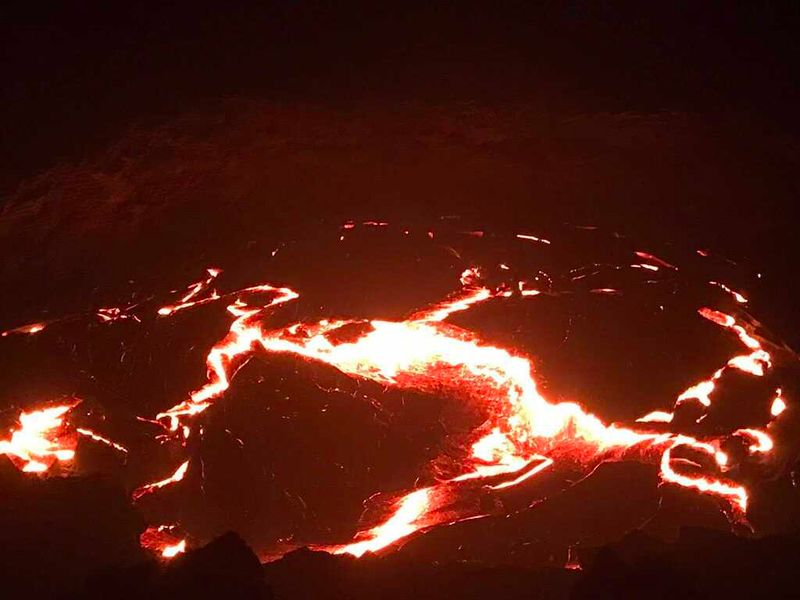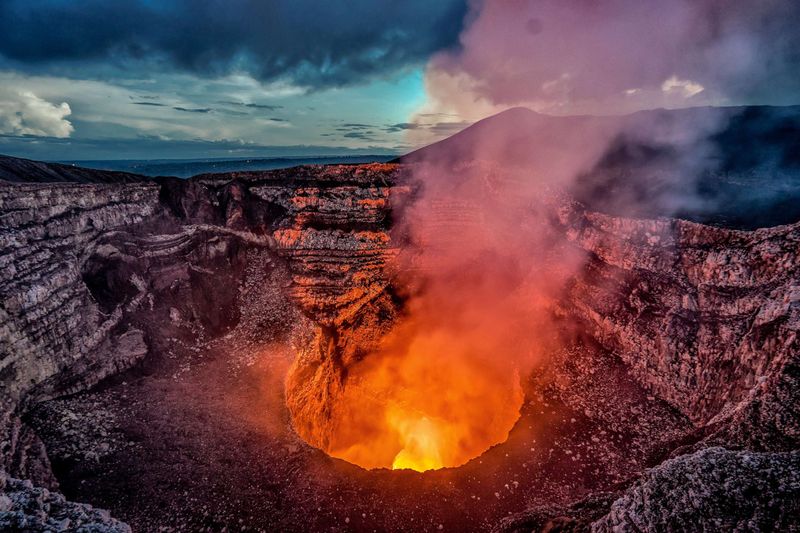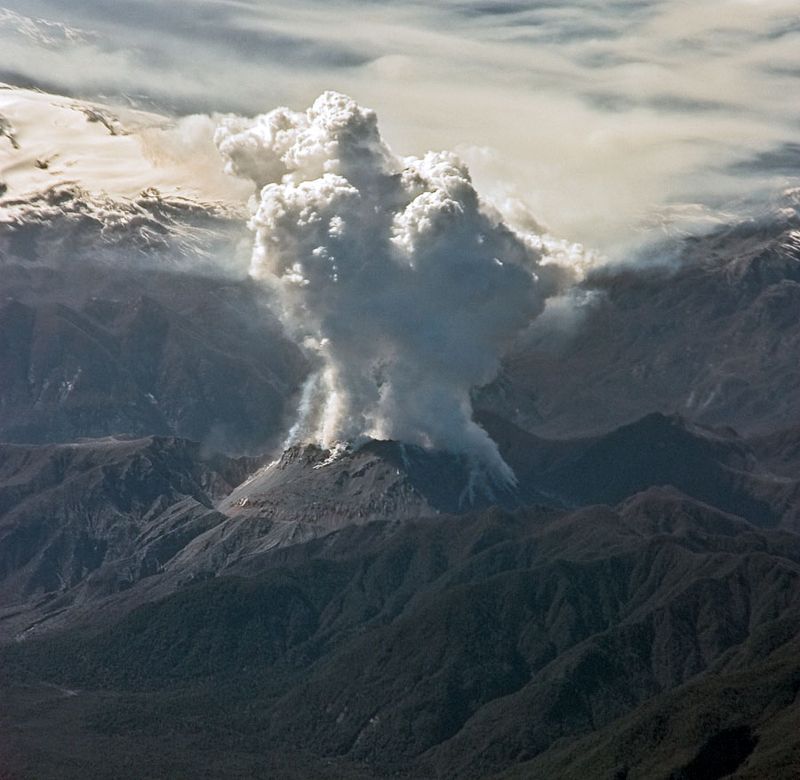Volcanic eruptions have shaped our planet’s landscape, but they have also caused immense human tragedy. This post explores the 30 deadliest eruptions in history, ranked by their death toll.
Each event is a stark reminder of nature’s power and the fragility of human life in the face of such force.
From the ancient eruption of Mount Vesuvius to the more recent devastation caused by Mount Pinatubo, these eruptions have left indelible marks on human history. We examine each disaster, detailing the impact they had on people and the environment.
1. Mount Tambora (1815, Indonesia)
The eruption of Mount Tambora in 1815 remains the deadliest in recorded history, claiming approximately 71,000 lives.
This catastrophic event spewed immense volumes of ash and gas into the atmosphere, leading to climatic anomalies known as the “Year Without a Summer.” Crops failed worldwide, resulting in widespread famine and disease.
In the immediate vicinity, entire villages were buried under volcanic material, altering the region’s geography permanently. Survivors faced harrowing conditions, with food scarcity compounding the misery.
The global climatic impact led to food shortages across continents, highlighting the far-reaching effects of this deadly eruption.
2. Krakatoa (1883, Indonesia)
In 1883, the explosive eruption of Krakatoa between Java and Sumatra unleashed a series of devastating tsunamis, killing over 36,000 people. The eruption’s sound was heard thousands of miles away, and the ash clouds affected global climates for years.
Coastal towns were inundated by waves, while the sky turned dark as day became night. The eruption had profound atmospheric effects, with vivid sunsets observed worldwide.
The island itself was largely obliterated, reshaping the surrounding waters. This event remains one of the most significant geological occurrences of the 19th century, captivating scientists and the public alike.
3. Mount Pelée (1902, Martinique)
The 1902 eruption of Mount Pelée on the island of Martinique is infamous for annihilating the town of Saint-Pierre, with around 28,000 people perishing in minutes.
A superheated pyroclastic flow raced down the mountainside, obliterating everything in its path. Only a handful of residents survived the disaster, which stands as a grim testament to nature’s destructive potential.
The eruption’s suddenness took the populace by surprise, despite preceding warnings. The town, once vibrant, was left in ruins, with only charred remnants hinting at its previous existence.
This tragedy underscored the critical need for volcanic monitoring and early warning systems.
4. Nevado del Ruiz (1985, Colombia)
The tragedy of Nevado del Ruiz in 1985 serves as a stark reminder of volcanic hazards. The eruption triggered a massive lahar, a deadly mudflow, that buried the town of Armero in Colombia, killing approximately 23,000 people.
Despite warnings, the community was unprepared for the scale of the disaster. The lahar descended rapidly from the snow-capped volcano, engulfing everything in its path. Survivors experienced unimaginable loss, as entire families were swept away.
The disaster initiated global efforts to improve volcanic hazard preparedness and response, emphasizing the dire need for proactive measures in vulnerable regions.
5. Vesuvius (79 AD, Italy)
The eruption of Mount Vesuvius in 79 AD is one of antiquity’s most renowned disasters, with about 16,000 estimated deaths. The cities of Pompeii and Herculaneum were buried under volcanic ash, preserving them in time.
Residents had little warning of the impending doom, as volcanic debris rained down. The event provides invaluable archaeological insights into Roman life but at a tragic human cost. Excavations reveal poignant scenes of daily life abruptly halted.
The disaster’s legacy is a poignant reminder of nature’s unpredictability, shaping modern understanding of volcanic phenomena and emergency preparedness.
6. Mount Unzen (1792, Japan)
In 1792, Mount Unzen’s eruption in Japan resulted in one of the country’s deadliest volcanic events, with about 15,000 fatalities. The eruption triggered a massive landslide, plunging into the sea and causing a devastating tsunami.
Coastal communities suffered greatly, with homes and lives lost in an instant. The catastrophic impact highlighted the interconnectedness of volcanic and seismic activity in the region. Recovery was arduous, with survivors facing prolonged hardships.
This tragedy spurred awareness and studies into volcanic activity, emphasizing Japan’s vulnerability and the importance of disaster preparedness in geologically active zones.
7. Laki (1783, Iceland)
The Laki eruption in 1783 stands as one of Iceland’s most impactful eruptions, leading to an estimated 9,350 deaths. The eruption lasted eight months, releasing vast quantities of sulfur dioxide into the atmosphere.
This caused a “haze famine” across Europe, with crop failures and livestock deaths. The resulting climatic impact was severe, with harsh winters and disrupted weather patterns. In Iceland, the toxic gases devastated agriculture, leading to starvation and disease.
The eruption’s far-reaching atmospheric effects highlight the global implications of volcanic activity, influencing climatic conditions far beyond the immediate vicinity of the eruption zone.
8. Santa María (1902, Guatemala)
Santa María’s 1902 eruption in Guatemala was a catastrophic event, leading to approximately 5,000 deaths.
The volcanic explosion was one of the 20th century’s largest, with ash clouds encircling the globe. Local communities were caught off-guard, with devastating impacts on agriculture and infrastructure.
The eruption’s magnitude disrupted daily life, and recovery was prolonged. The landscape was dramatically altered, with the formation of a large crater.
This event underscored the need for understanding volcanic activity in the region, leading to ongoing monitoring and research efforts to mitigate future risks and enhance community resilience.
9. Mount Merapi (cumulative, Indonesia)
Mount Merapi in Indonesia has been a persistent threat over centuries, with recurrent eruptions claiming approximately 5,000 lives cumulatively. Known for its frequent activity, Merapi poses ongoing risks to surrounding communities.
Each eruption brings with it challenges of evacuation and recovery, as residents face ashfall and pyroclastic flows. The volcano’s proximity to populated areas exacerbates its threat, necessitating vigilant monitoring and emergency preparedness.
Despite the risks, communities have adapted, integrating traditional knowledge with modern technology to coexist with the volcano. Merapi remains a focal point for research and risk management in Indonesia’s volcanic landscape.
10. Huaynaputina (1600, Peru)
The 1600 eruption of Huaynaputina in Peru caused widespread devastation, resulting in approximately 3,500 deaths. This explosive event had significant climatic repercussions, with global temperatures dropping.
Ash spread across South America, affecting agriculture and leading to food shortages. Local populations were severely impacted, with homes and livelihoods destroyed.
The eruption’s magnitude was unprecedented in the region, altering the landscape and leaving a lasting legacy.
Historians and scientists study this event to understand its climatic effects and historical context, emphasizing the importance of volcanic monitoring and preparedness in the Andes, a region with significant volcanic activity.
11. El Chichón (1982, Mexico)
In 1982, El Chichón’s eruption in Mexico took the world by surprise, resulting in about 2,000 deaths. The volcano, previously considered dormant, erupted violently, releasing massive amounts of ash and sulfur dioxide.
The explosion devastated local communities, with villages buried under volcanic material. The eruption’s atmospheric impact was felt globally, with noticeable climatic effects.
The event highlighted the need for comprehensive volcanic monitoring, even for seemingly inactive volcanoes.
The disaster prompted advancements in Mexico’s volcanic research and preparedness strategies, ensuring better protection for populations living in proximity to volcanic areas and improving global understanding of such phenomena.
12. Agung (1963–1964, Indonesia)
The eruption of Mount Agung in 1963–1964 was a major volcanic event in Indonesia, claiming about 1,115 lives. The eruption produced towering ash clouds and lava flows that damaged infrastructure and disrupted lives.
Balinese culture, deeply spiritual and intertwined with their landscape, faced significant challenges. Agricultural lands were buried, and many were forced to evacuate.
Despite the destruction, the community demonstrated resilience, rebuilding and adapting to the changed environment.
Agung’s activity emphasized the need for effective evacuation plans and highlighted the cultural significance of volcanoes in Indonesia, shaping both scientific inquiry and disaster management approaches.
13. Mount Pinatubo (1991, Philippines)
The 1991 eruption of Mount Pinatubo in the Philippines was a monumental event, with approximately 800 deaths. The eruption’s scale was colossal, sending vast ash columns into the sky and affecting global temperatures.
Timely evacuations saved countless lives, showcasing the value of effective disaster response. The eruption disrupted local communities, burying homes and altering landscapes.
Pinatubo’s impact extended beyond immediate devastation, influencing climate and atmospheric study.
The eruption led to significant advancements in volcanic monitoring and emergency preparedness in the Philippines, serving as a model for international disaster response efforts and emphasizing the importance of readiness.
14. Merapi (2010, Indonesia)
In 2010, Mount Merapi erupted in Indonesia, leading to 353 fatalities. Known for its volatility, Merapi’s activity prompted extensive evacuations. The ash cloud covered vast areas, disrupting air travel and affecting daily life.
Local communities were displaced, facing challenges of temporary resettlement. The eruption highlighted the importance of robust emergency plans and real-time monitoring.
Despite the destruction, the response efforts were praised for their effectiveness, minimizing potential casualties.
Merapi’s activity continues to be a focus for scientists and disaster management professionals, emphasizing ongoing vigilance and adaptation strategies to mitigate risks from this active volcano.
15. Nyiragongo (2002, Democratic Republic of the Congo)
The 2002 eruption of Nyiragongo in the Democratic Republic of the Congo was a dramatic event, resulting in approximately 147 deaths. Known for its fast-moving lava flows, Nyiragongo’s eruption devastated parts of the city of Goma.
Thousands were displaced, with homes and infrastructure destroyed. The event underscored the challenges of living near active volcanoes, as well as the need for effective evacuation procedures.
Despite the chaos, the international community’s response provided crucial aid and support. The eruption serves as a reminder of the persistent threat posed by Nyiragongo and the importance of preparedness in vulnerable regions.
16. Tarawera (1886, New Zealand)
In 1886, the eruption of Mount Tarawera in New Zealand resulted in about 120 deaths. The eruption created a massive rift, altering the landscape dramatically and destroying several villages.
The renowned Pink and White Terraces, an iconic natural wonder, were obliterated. Local Maori communities were deeply affected, with significant cultural and spiritual losses.
The event highlighted New Zealand’s geological volatility and the need for awareness and preparedness.
Tarawera’s eruption remains a significant part of New Zealand’s natural history, influencing both scientific research and cultural heritage preservation. It stands as a reminder of the land’s powerful natural forces.
17. Fuego (1974, Guatemala)
The Fuego volcano in Guatemala is known for its frequent eruptions. The 1974 event was particularly devastating, causing about 100 deaths. The eruption sent ash plumes high into the atmosphere, affecting air quality and agriculture.
Local communities faced significant disruption, with evacuations and damage to infrastructure. The volcano’s activity underscores the ongoing threat to those living nearby, necessitating constant vigilance and preparedness.
Fuego remains one of Central America’s most active volcanoes, with continuous monitoring efforts in place. The 1974 eruption emphasized the importance of readiness and effective communication to mitigate the risks posed by volcanic hazards.
18. Mayon (Philippines, e.g., 1993 event)
Mayon volcano, renowned for its perfect cone shape, has a history of destructive eruptions. The 1993 eruption resulted in about 77 fatalities, primarily due to pyroclastic flows.
Communities around Mayon are accustomed to its activity, with established evacuation procedures. The eruption caused significant damage to agriculture and infrastructure, highlighting the volcano’s persistent threat.
Mayon’s eruptions are both a scientific interest and a challenge for local authorities. Efforts focus on improving monitoring technology and community awareness, ensuring that residents are prepared and informed.
The volcano’s majestic yet menacing presence is a testament to the beauty and power of nature.
19. Galunggung (1982, Indonesia)
The eruption of Galunggung in 1982 was a significant event in Indonesia, resulting in about 68 deaths. The volcano’s activity disrupted local communities and had a notable impact on aviation, with ash clouds causing engine failures in aircraft.
The eruption highlighted the need for improved aviation safety measures and volcanic monitoring. Local populations faced the challenges of ashfall, which affected agriculture and health.
Despite the destruction, the eruption spurred advancements in disaster response and preparedness. Today, Galunggung is closely monitored, and the lessons learned from its past activity continue to inform safety protocols and community preparedness efforts.
20. Sakurajima (1914, Japan)
Sakurajima’s 1914 eruption in Japan was one of the country’s most powerful in the 20th century, causing about 60 deaths. The eruption’s lava flows connected the former island to the mainland, altering the geography permanently.
The event forced evacuations and destroyed homes, affecting local livelihoods. Sakurajima remains highly active, posing ongoing risks to nearby communities.
The 1914 eruption underscored the importance of understanding volcanic activity in Japan’s seismically active environment.
It led to advancements in volcanic research and monitoring, emphasizing the need for effective emergency planning and community preparedness in areas prone to volcanic activity.
21. Sinabung (Indonesia, various eruptions since 2010)
Mount Sinabung in Indonesia has experienced multiple eruptions since 2010, with cumulative fatalities around 50. The volcano, previously dormant, reawakened, leading to repeated evacuations and disruptions for local communities.
Ash clouds have affected health, agriculture, and infrastructure, highlighting the ongoing risks. The eruptions emphasized the need for robust monitoring systems and community preparedness.
Despite the challenges, recovery efforts have focused on resilience and adaptation, ensuring that residents are equipped to respond to future activity.
Sinabung’s eruptions serve as a case study for managing volcanic hazards in densely populated regions, with ongoing research and readiness crucial for minimizing impact.
22. Popocatépetl (Mexico, various eruptions)
Popocatépetl, one of Mexico’s most active volcanoes, has a history of eruptions with typically low fatalities, generally under 50 per event.
The volcano’s activity poses continuous challenges for nearby communities, with ashfall affecting health and agriculture. Popocatépetl’s proximity to densely populated areas necessitates constant monitoring and preparedness.
The volcano is a focal point for scientific research, with efforts aimed at improving prediction accuracy and emergency response strategies.
Despite the risks, the region’s rich cultural heritage remains intertwined with the majestic volcano, symbolizing both danger and beauty. Popocatépetl’s eruptions are a reminder of nature’s power and the importance of resilience.
23. Colima (Volcán de Fuego, Mexico, various eruptions)
The Colima Volcano, also known as Volcán de Fuego, is one of Mexico’s most active volcanoes. Its eruptions typically result in minimal fatalities, generally under 50 per event.
The volcano’s frequent activity poses challenges for local communities, requiring persistent monitoring and readiness. Ashfall and lava flows threaten agriculture and infrastructure, emphasizing the need for effective disaster management strategies.
The Colima Volcano serves as a critical site for volcanic research, with ongoing studies aimed at improving eruption forecasts and community awareness.
The region’s dedication to understanding and coexisting with Colima highlights the importance of proactive volcanic hazard management.
24. Taal (2020, Philippines)
The 2020 eruption of Taal Volcano in the Philippines was a dramatic event, resulting in about 39 deaths. The eruption prompted widespread evacuations, with thousands displaced from surrounding areas.
Taal’s sudden activity highlighted the need for effective evacuation plans and community preparedness. The ash plume affected air quality and agriculture, causing significant disruptions.
Despite the challenges, the response efforts were swift, minimizing potential casualties. Taal remains a focus for continuous monitoring, with efforts to enhance prediction capabilities and readiness.
The eruption underscored the importance of vigilance and coordination in managing volcanic hazards in densely populated regions.
25. Soufrière Hills (1995–present, Montserrat)
The ongoing eruption of Soufrière Hills on the island of Montserrat began in 1995 and continues to present challenges. The volcanic activity has resulted in approximately 19 deaths and led to the abandonment of the island’s capital, Plymouth.
The eruption has reshaped the island, with significant portions rendered uninhabitable. Residents faced displacement and adaptation to new living conditions, highlighting the long-term effects of sustained volcanic activity.
The eruption has provided valuable insights into monitoring and managing active volcanoes, with Montserrat serving as a case study for volcanic hazard management. The community’s resilience and adaptation strategies remain critical.
26. Stromboli (Italy, various eruptions)
Stromboli, known for its consistent volcanic activity, has had eruptions resulting in fatalities, with one event recording 14 deaths. The volcano’s frequent eruptions create spectacular displays, attracting tourists but posing risks to both visitors and residents.
The island’s community has adapted to living with the volcano, implementing safety measures and monitoring. Stromboli’s activity is a key focus for volcanic research, providing insights into continuous eruption patterns.
The island’s unique setting and geological activity make it a significant site for both scientific study and tourism, emphasizing the balance between appreciating natural beauty and ensuring safety and preparedness.
27. Ambrym (Vanuatu, various eruptions)
Ambrym in Vanuatu is known for its active lava lakes and frequent eruptions, with some events claiming around 10 lives. The island’s volcanic activity shapes its environment and poses challenges for local communities.
Eruptions impact agriculture and infrastructure, necessitating preparedness and adaptation. The volcano’s mesmerizing lava lakes attract scientific interest, contributing to the understanding of volcanic processes.
Despite the potential dangers, the islanders maintain a strong connection to their land, utilizing traditional knowledge and modern techniques to coexist with the volcano.
Ambrym’s eruptions are a testament to the dynamic nature of the earth and the resilience of its inhabitants.
28. Erta Ale (Ethiopia, ongoing activity)
Erta Ale in Ethiopia is renowned for its persistent activity and mesmerizing lava lake, though recorded fatalities are minimal. The volcano’s remote location in the Danakil Depression presents unique challenges and opportunities for scientific exploration.
The harsh environment and active lava flows attract adventurers and researchers alike. Erta Ale’s ongoing activity offers insights into volcanic processes, contributing to broader geological understanding.
Despite its remoteness, the volcano’s activity is closely monitored to ensure safety for those who venture near. The stark beauty of Erta Ale contrasts with its potential dangers, underscoring the allure and risks of active volcanoes.
29. Masaya Volcano (Nicaragua, various eruptions)
Masaya Volcano in Nicaragua is known for its active crater and frequent eruptions. In modern times, fatalities are very low or non-existent, thanks to advancements in monitoring and safety protocols.
The volcano is a significant tourist attraction, offering visitors the chance to experience volcanic activity safely. Masaya’s eruptions provide valuable data for scientific research, enhancing understanding of volcanic behavior.
The surrounding communities benefit from tourism, although they remain vigilant of potential hazards.
The volcano’s presence is a reminder of nature’s power and the importance of preparedness. Masaya’s active fumaroles and dynamic landscape make it a unique natural wonder.
30. Chaitén (2008, Chile)
The 2008 eruption of Chaitén in Chile was unexpected, yet remarkably resulted in no deaths. The volcano, dormant for centuries, erupted with significant ash emissions, leading to the evacuation of nearby communities.
The eruption caused extensive damage to infrastructure, but effective evacuation efforts ensured safety. Chaitén’s activity highlighted the need for readiness even when dealing with seemingly inactive volcanoes.
The event contributed to advancements in volcanic monitoring and risk assessment. The successful response to Chaitén’s eruption underscores the importance of preparedness and adaptability in managing volcanic threats, providing valuable lessons for future similar scenarios.
